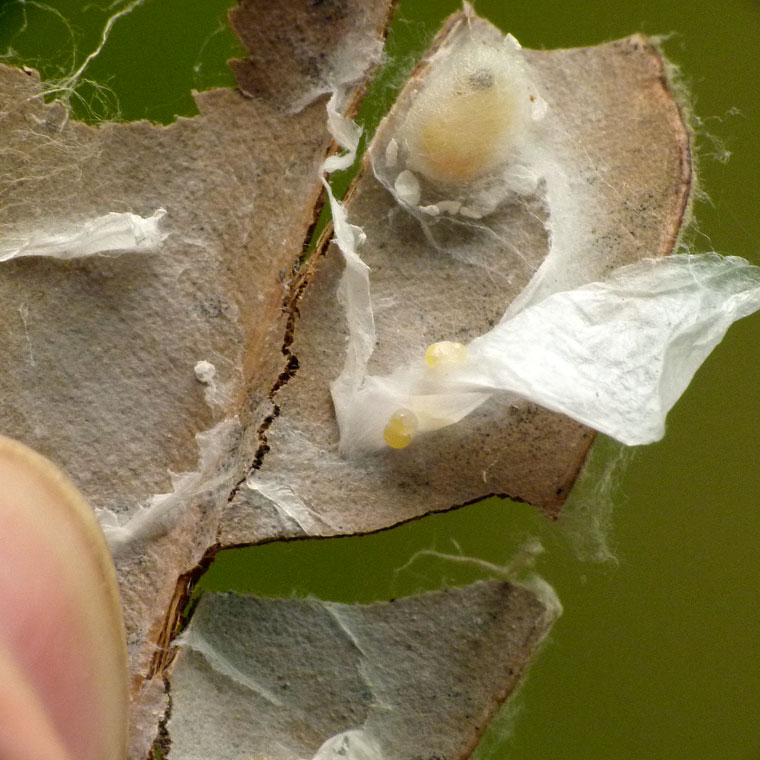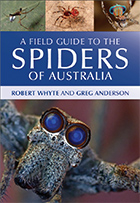A common jumping spider, variable in size, colour and pattern, with a range from Northern NSW to Sri Lanka, probably also elsewhere in eastern Australia. Females can be up to 10mm in body length, the males smaller, up to about 6mm. They are abdundant on shrubs in coastal areas, especially near the sea, in thick scrub behind dunes. They prefer relatively thick but dry foliage, such as dense shrubs with tangled vines. Mature spiders have flat fronted somewhat stippled but relatively smooth chelicerae, usually jet black and prominent. The males do not have transverse ridges or bowing on the edges of their straight edged chelicerae, separating them from Servaea. Females are less orange in the face, carapace and especially abdomen than the males which can have distinctive orange markings somewhat like a pair of butterfly wings, a party mask, or large heart-shaped lips, on the forward third of the upper surface of the abdomen. Juvenile males are often more orange-brown than adults. Adult males can be either orange or black. Both males and females have white scales in a band around the rear of the carapace and the leading edge of the abdomen. They are fissident, with a prominent double-pointed tooth on the retromargin the chelicerae (the underneath or ventral edge). They have a row of single smaller teeth on the promargin (front or dorsal edge). They build a flat, densely woven egg sac and place it nearby the nest in rolled up leaves. First described as Salticus bleekeri by Doleschall in 1859, it has had many name changes, being put in genera including Plexippus, Hasarius and Plotius. The currently accepted name comes from the 1989 revision of Australian salticids by Davies and Zabka.
- Female from side and above, facing up
- Female, lighter coloured, more patterned, from above
- Female, side on
- Female, side view from above
- Female, mostly grey, from above
- Female, mostly bald, from above
- Female, mostly bald, facing
- Male adult side on from above, orange-brown
- Male adult mostly black to dark brown with white scales and hairs
- Male adult side on from behind, mostly black
- Male subadult from Bromwich Street, The Gap, some orange brown
- Male subadult, orange-brown with white scales body length about 3.5mm
- Male subadult, orange-brown with white scales, facing
- Male subadult, orange-brown with white scales, from above
- Male subadult, orange-brown with white scales, lifting spinnerets to escape on silk.
- Male subadult, from above
- Male left palp, showing bifurcated embolus
- Male right palp, from side
- Male palps from underneath
- Male teeth on chelicera, note large double pointed tooth
- Juvenile
- Juvenile
- Juvenile
- Juvenile
- Juvenile
- Juvenile
- Juvenile
- Subadult
- North Stradbroke Island, Brown Lake specimen 260810
- North Stradbroke Island, Brown Lake specimen 260810
- Female North Queensland GJA-5820-f
- Male subadult From North Queensland GJA-5881-pen-m
- Egg chamber in bark
- Egg chamber opened
Female from side and above, facing up
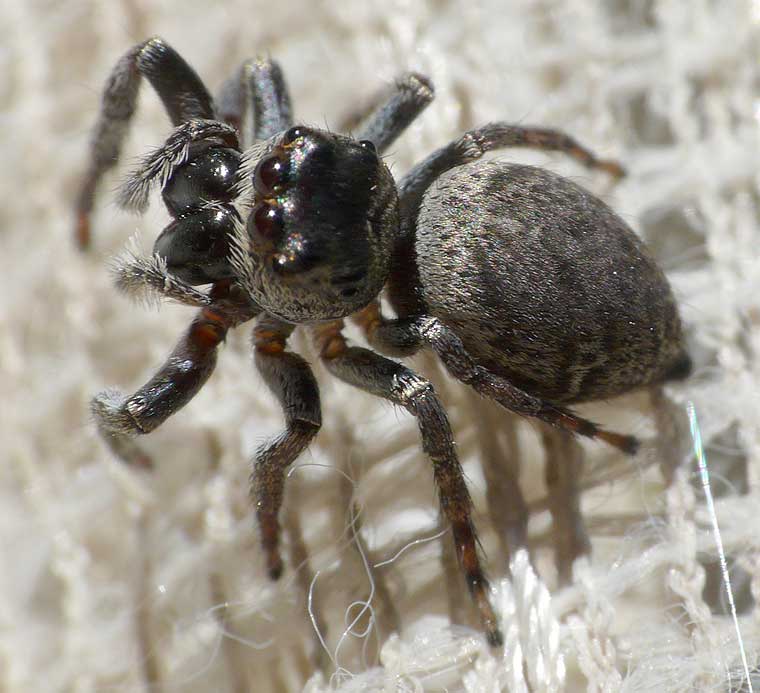
Female, lighter coloured, more patterned, from above
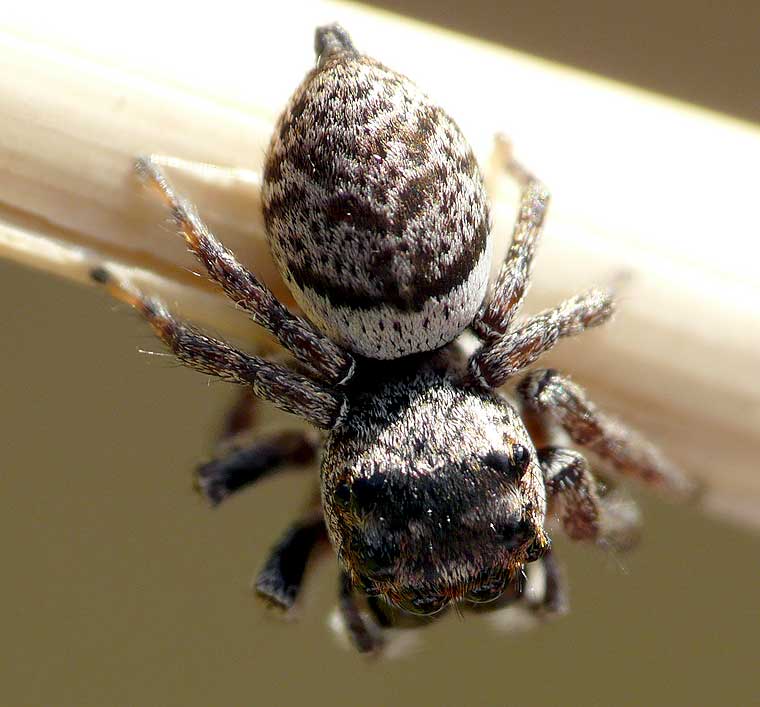
Female, side on
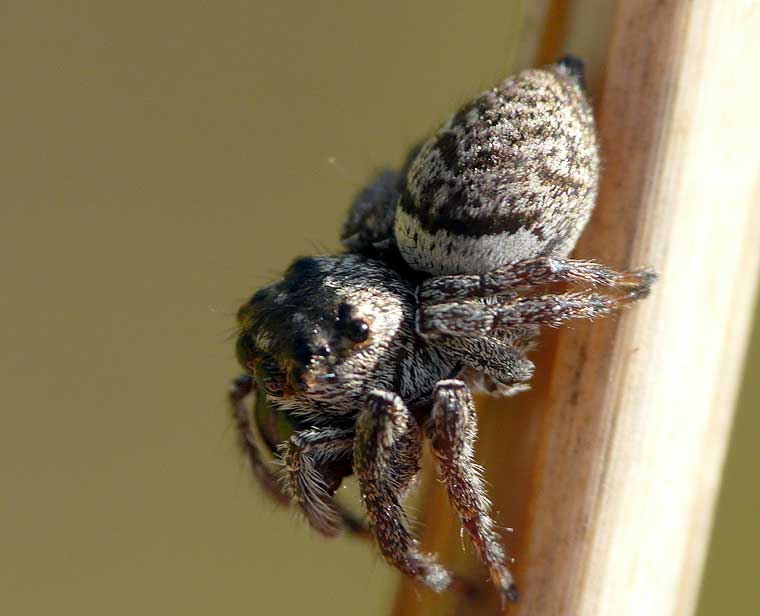
Female, side view from above
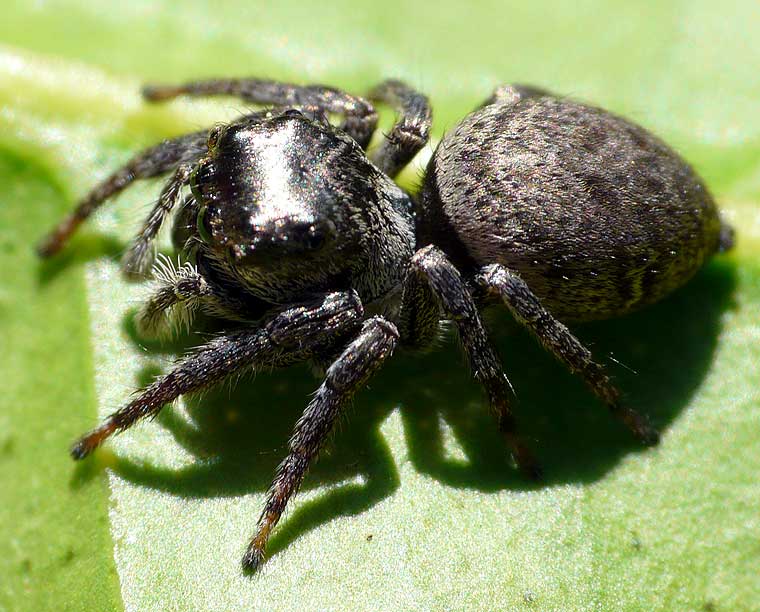
Female, mostly grey, from above
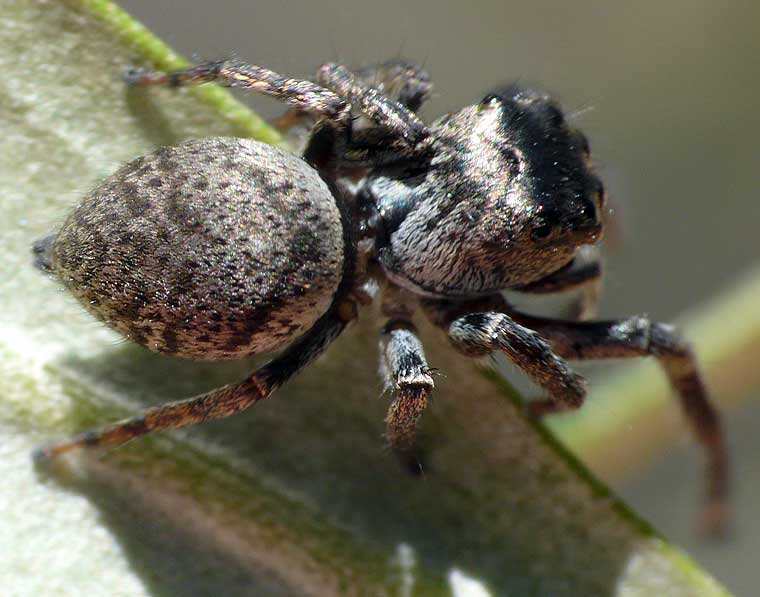
Female, mostly bald, from above
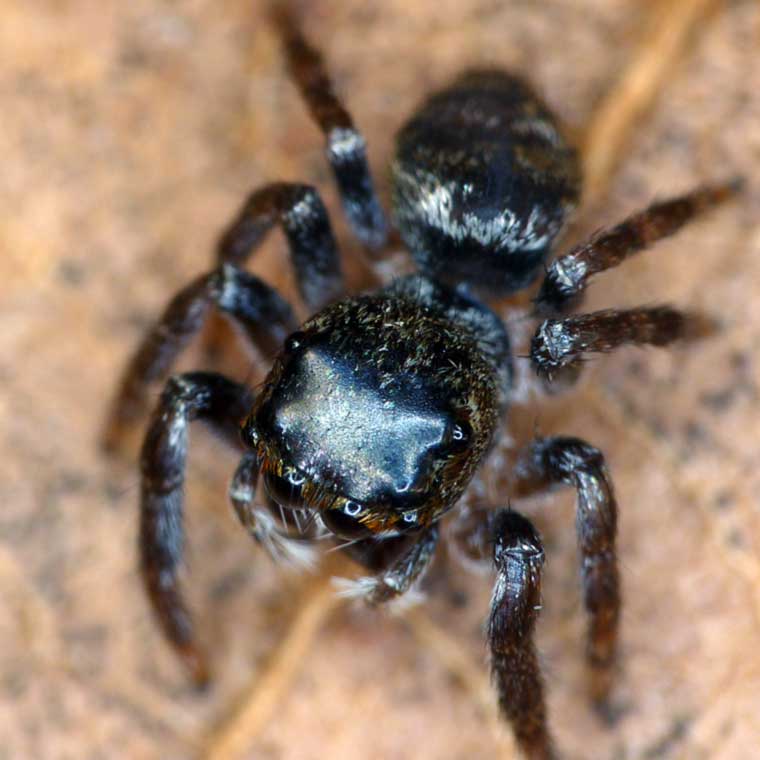
Female, mostly bald, facing
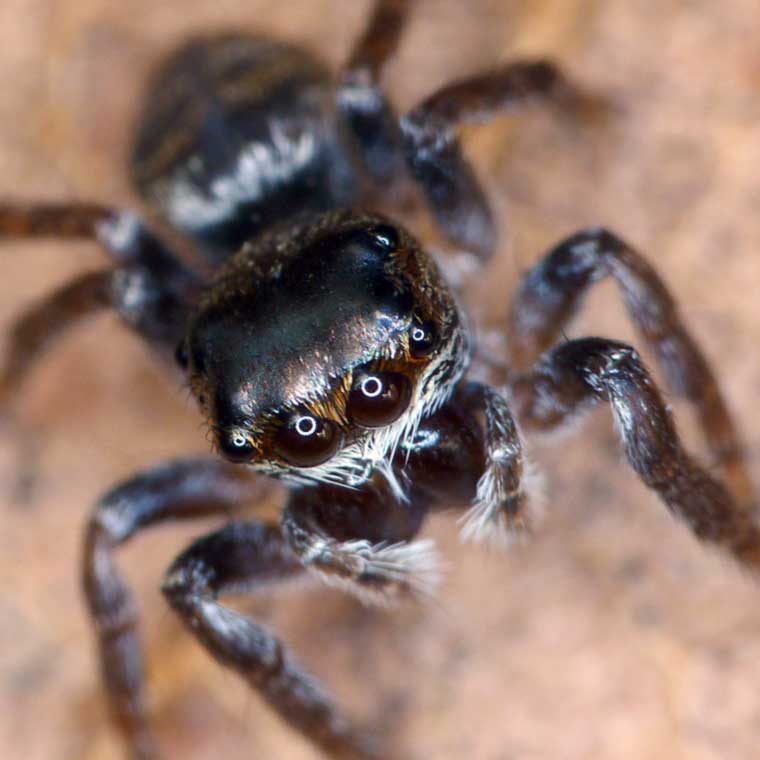
Male adult side on from above, orange-brown
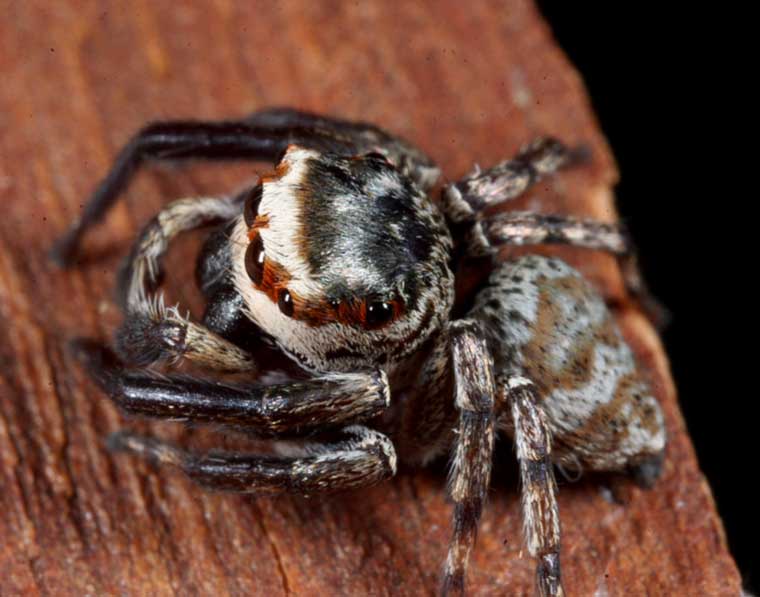
Male adult mostly black to dark brown with white scales and hairs
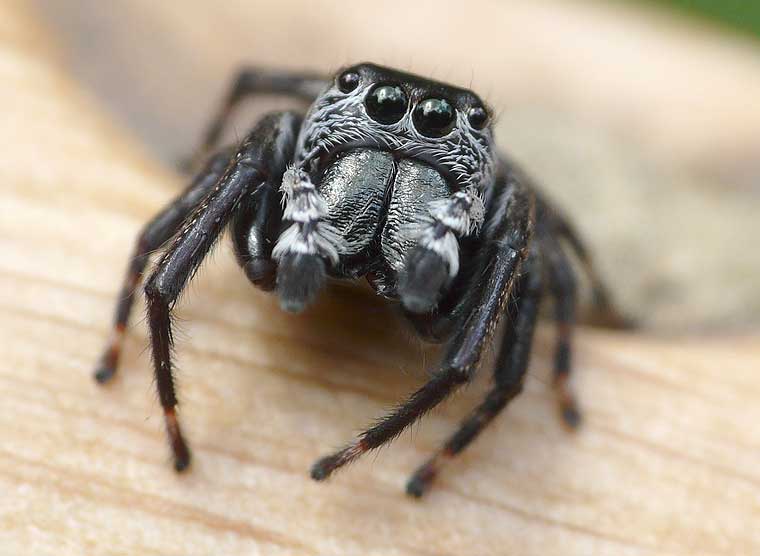
Male adult side on from behind, mostly black
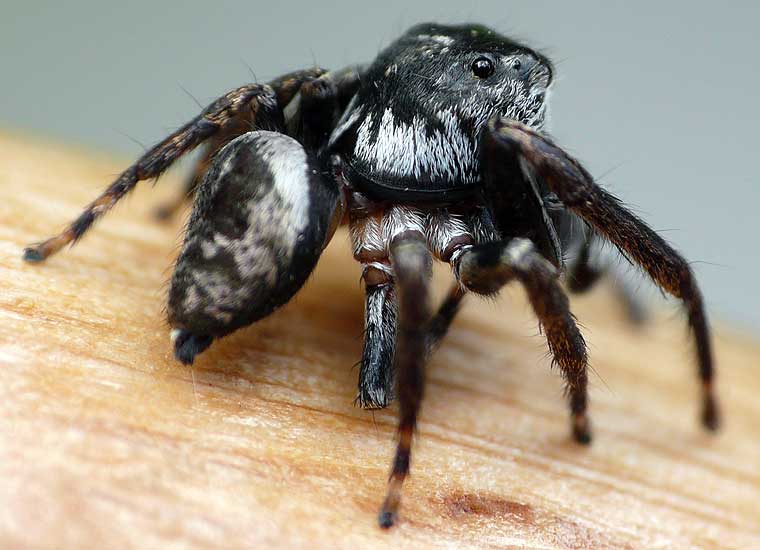
Male subadult from Bromwich Street, The Gap, some orange brown
Part of a biodiversity survey at 25 Bromwich St, The Gap, on Fish Creek, comparing this mostly native garden with a similar area of dry rain forest restoration work.
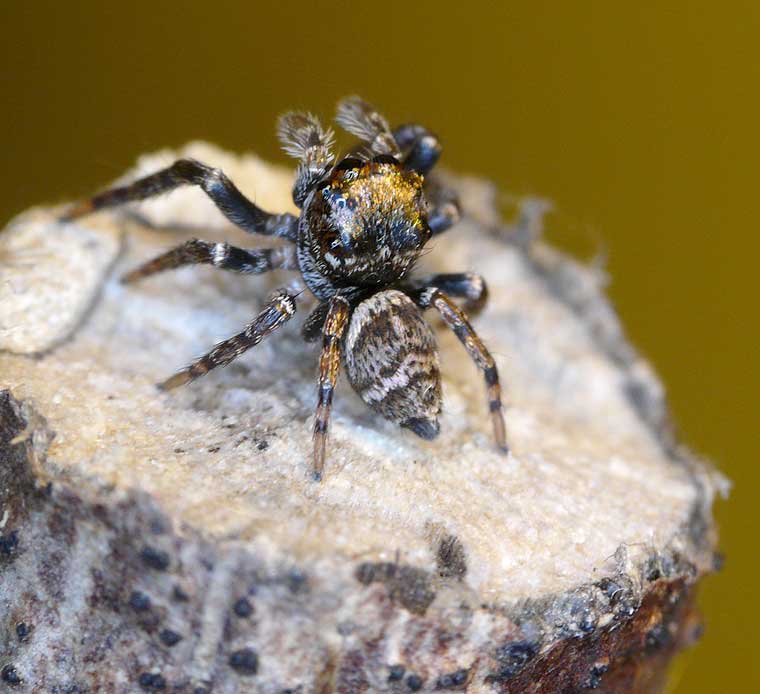
Male subadult, orange-brown with white scales body length about 3.5mm
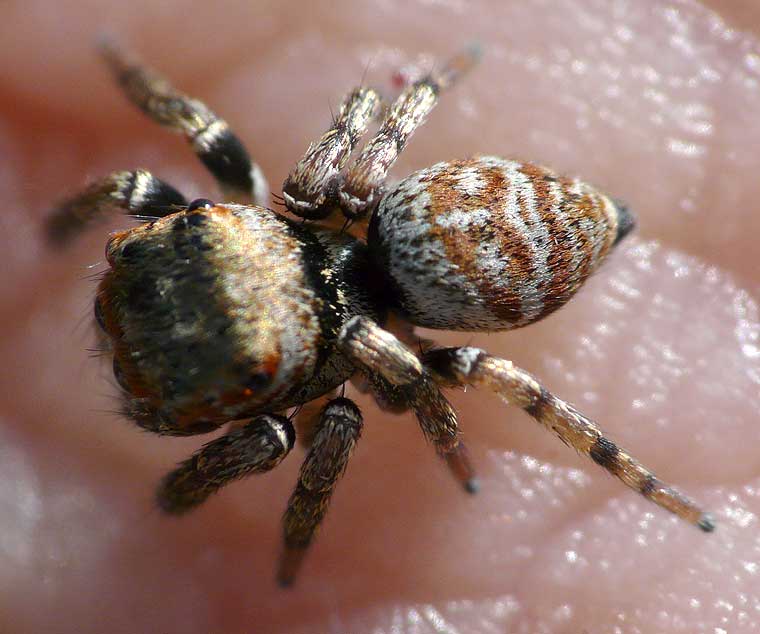
Male subadult, orange-brown with white scales, facing
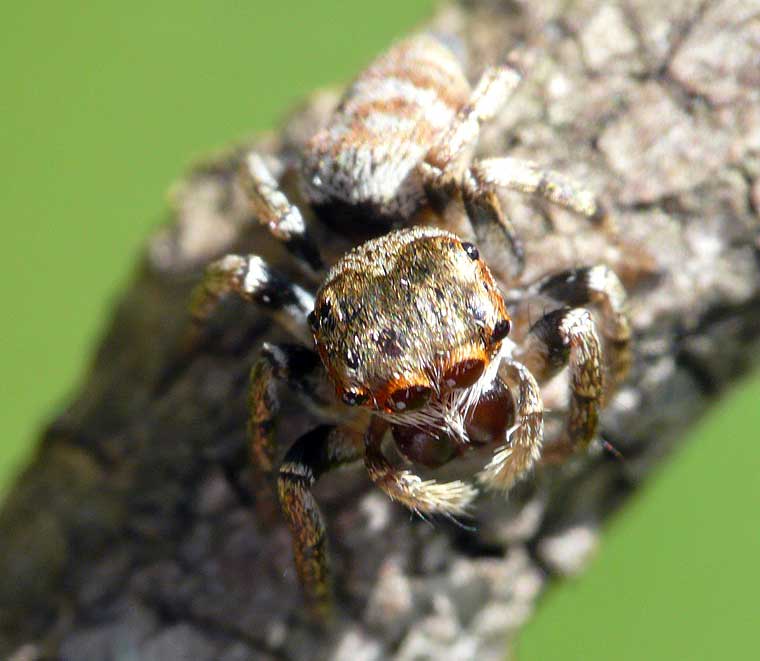
Male subadult, orange-brown with white scales, from above
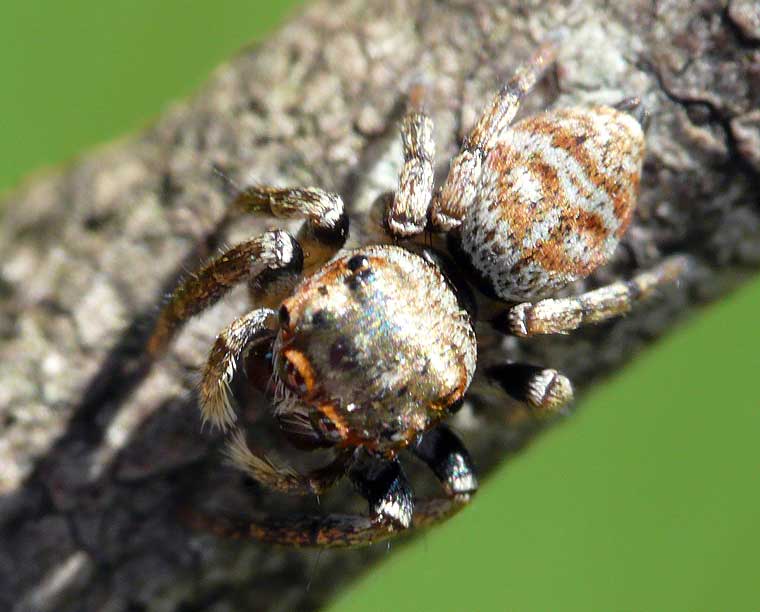
Male subadult, orange-brown with white scales, lifting spinnerets to escape on silk.
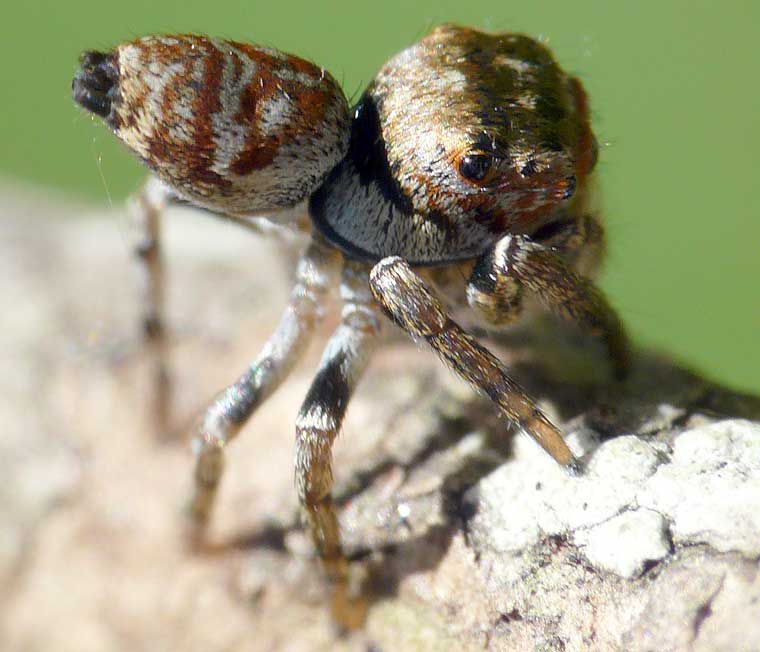
Male subadult, from above
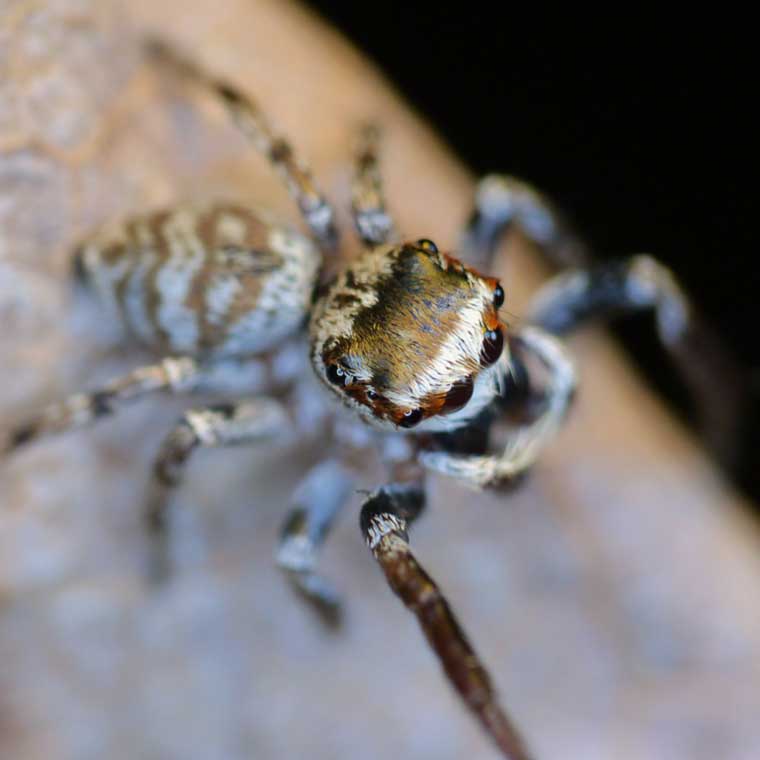
Male left palp, showing bifurcated embolus
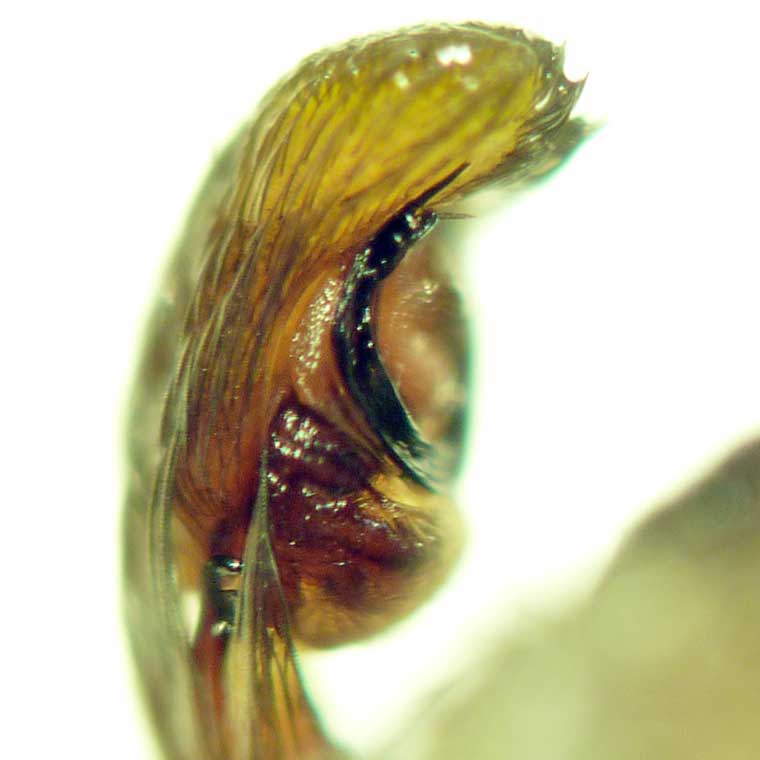
Male right palp, from side

Male palps from underneath
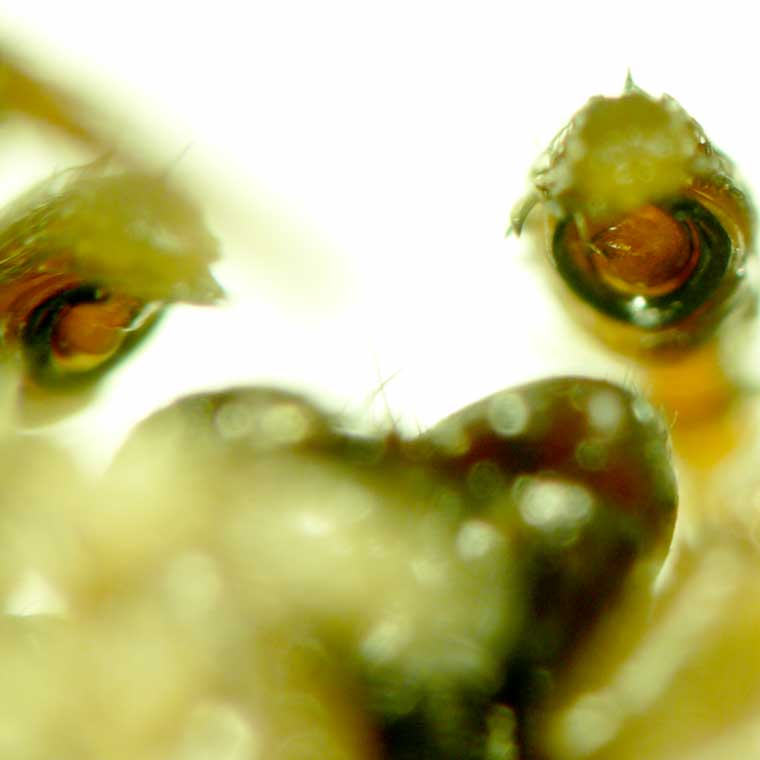
Male teeth on chelicera, note large double pointed tooth

Juvenile
These spiders are sometimes found along creek edges or beside water, as well as throughout all kinds of scrub and in gardens. It may be a very young stage of the Euryattus bleekeri. It may be possible to confirm this possibility by raising young from positivitely identified females, and also by raising these spiders when found. Update: we have found these in the nests with the adults. They are the juveniles and there are other instars that looks similar.

Juvenile
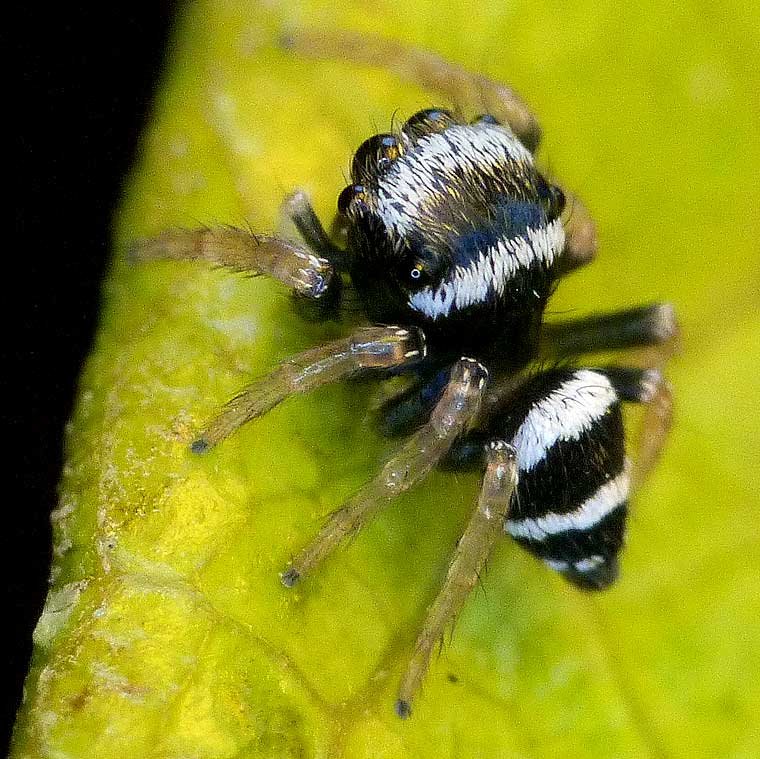
Juvenile
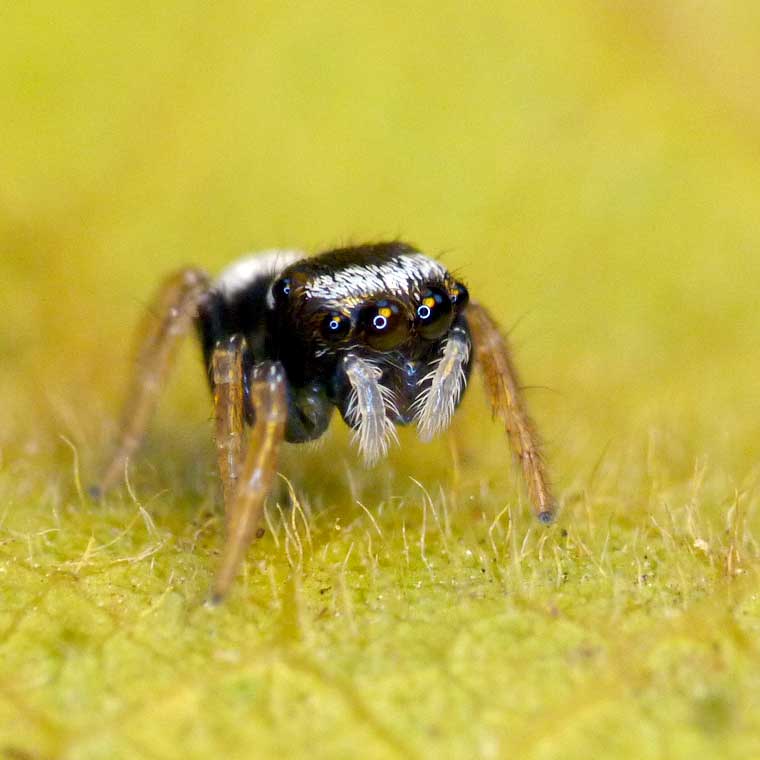
Juvenile
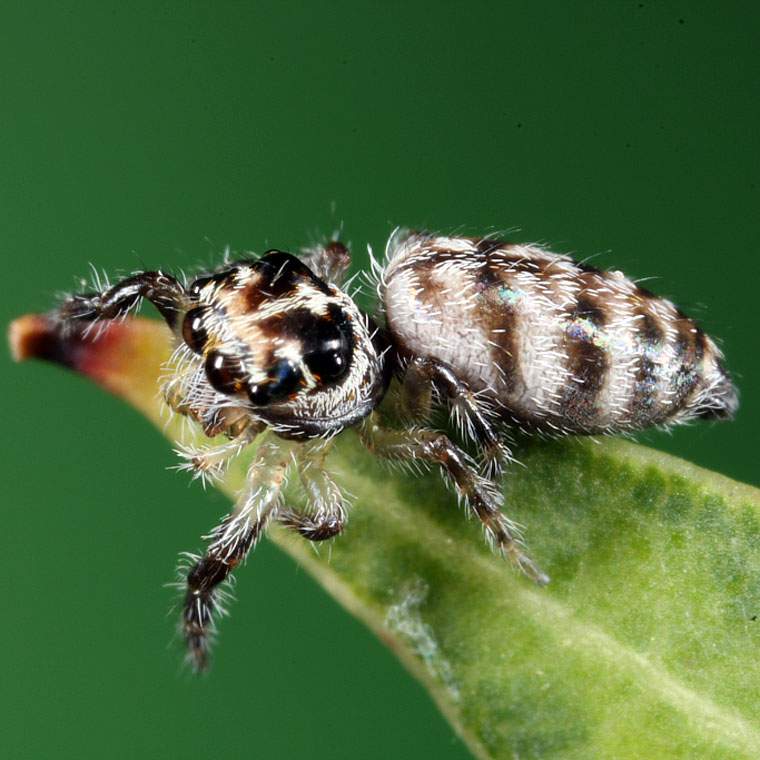
Juvenile
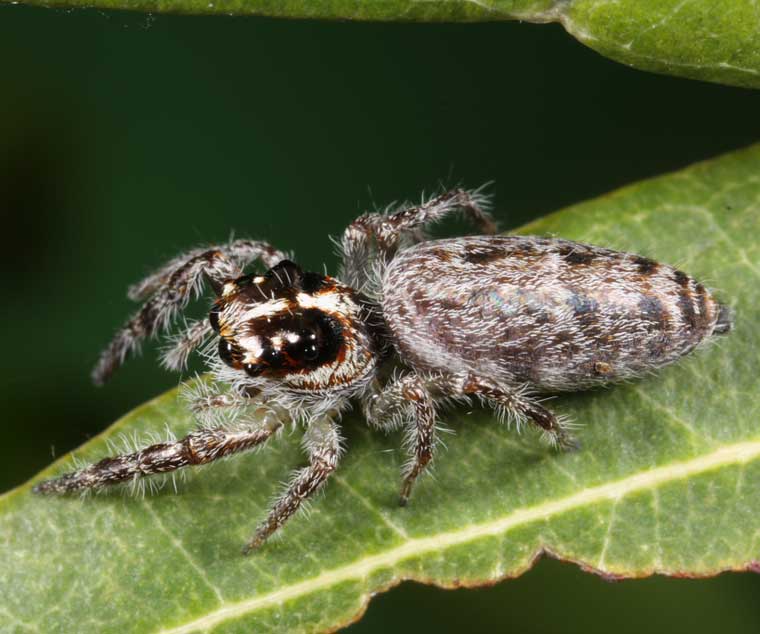
Juvenile
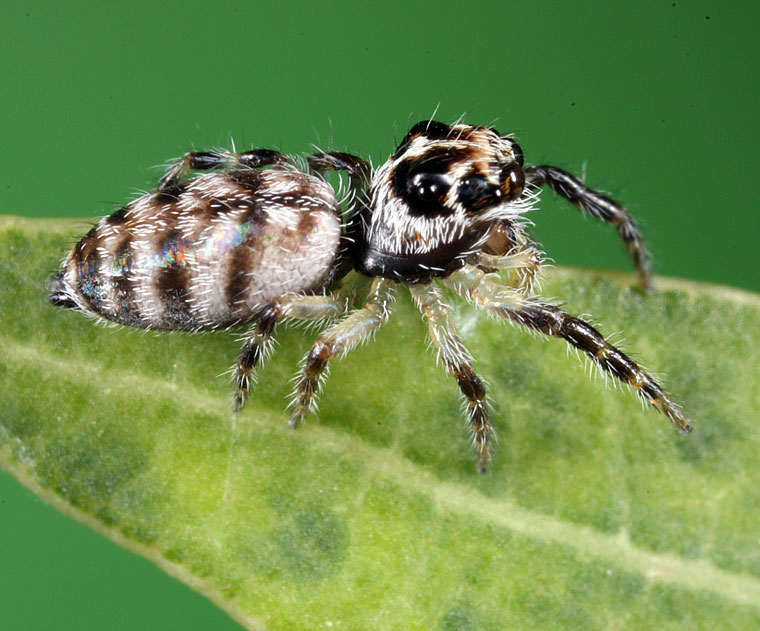
Juvenile
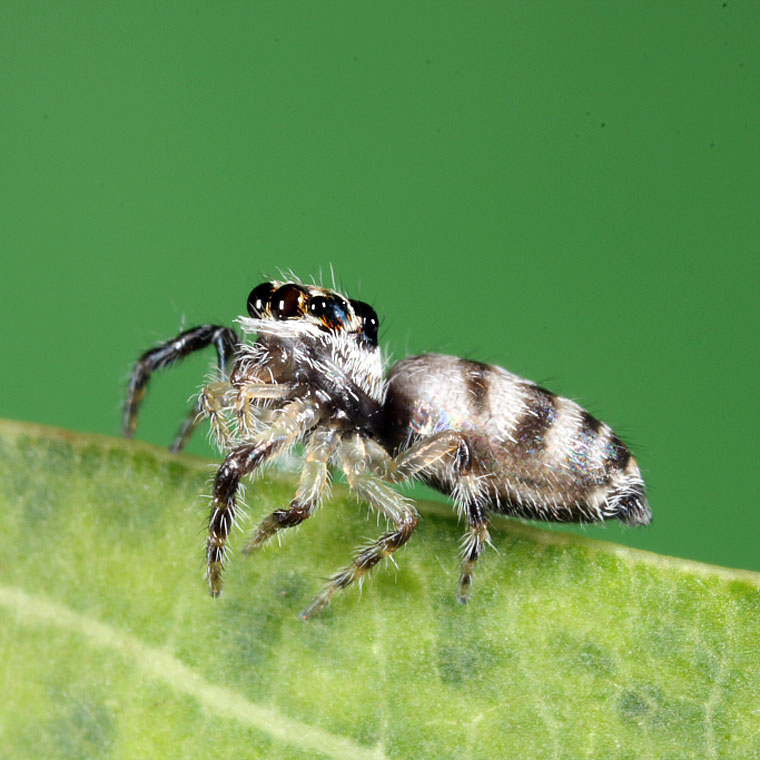
Subadult
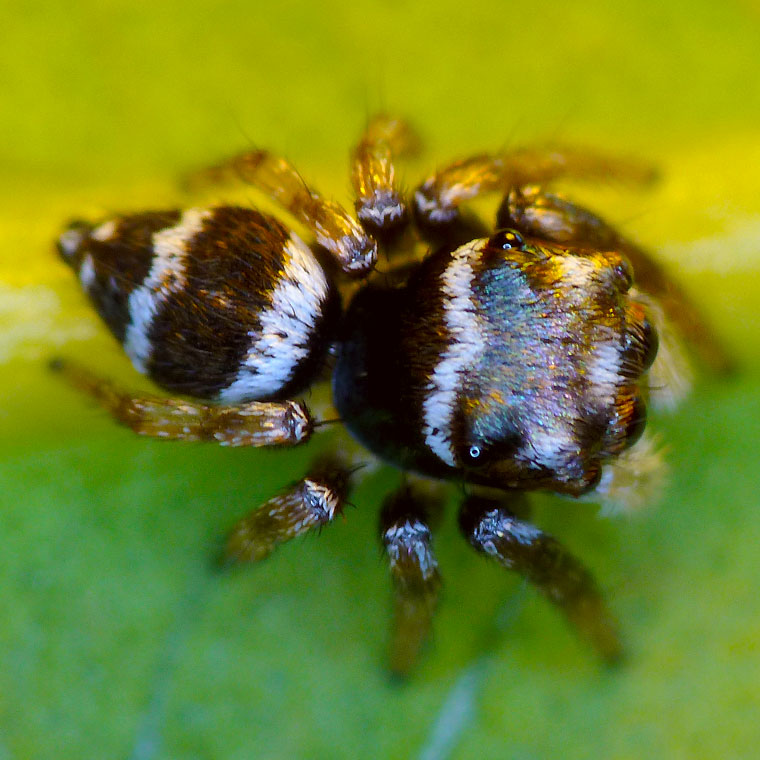
North Stradbroke Island, Brown Lake specimen 260810
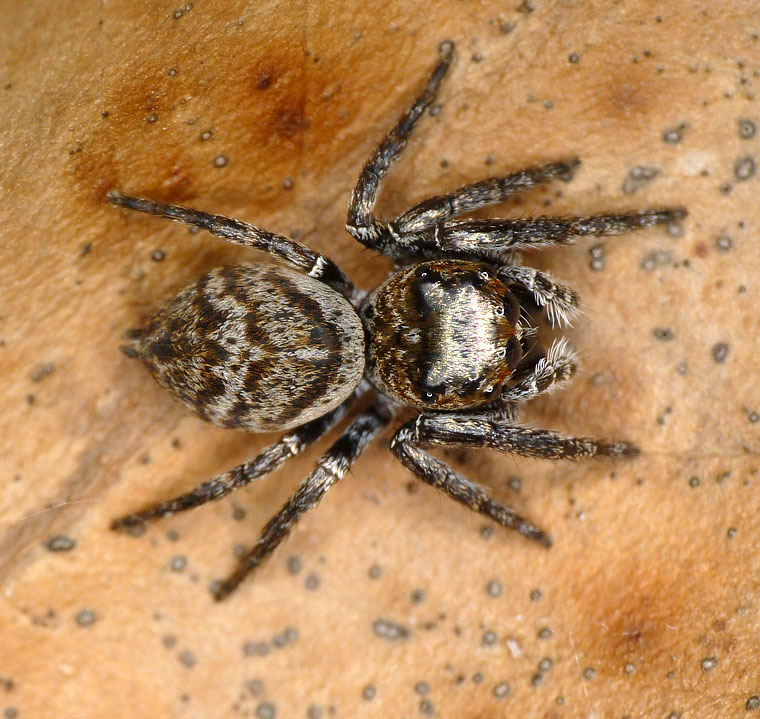
North Stradbroke Island, Brown Lake specimen 260810

Female North Queensland GJA-5820-f
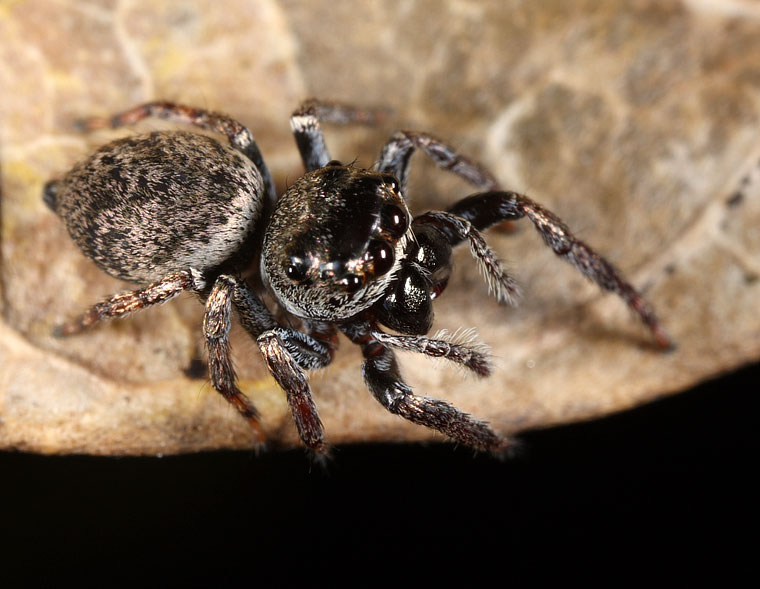
Male subadult From North Queensland GJA-5881-pen-m

Egg chamber in bark
This egg chamber is slung along an arched grass stem mostly where the grass stem is horizontal to the ground. The nest is inside a curled piece of bark or leaf, quite strong. Inside it always a large female and variously eggs or babies. The babies are the striped spiders suspected previously of being juveniles of this species.
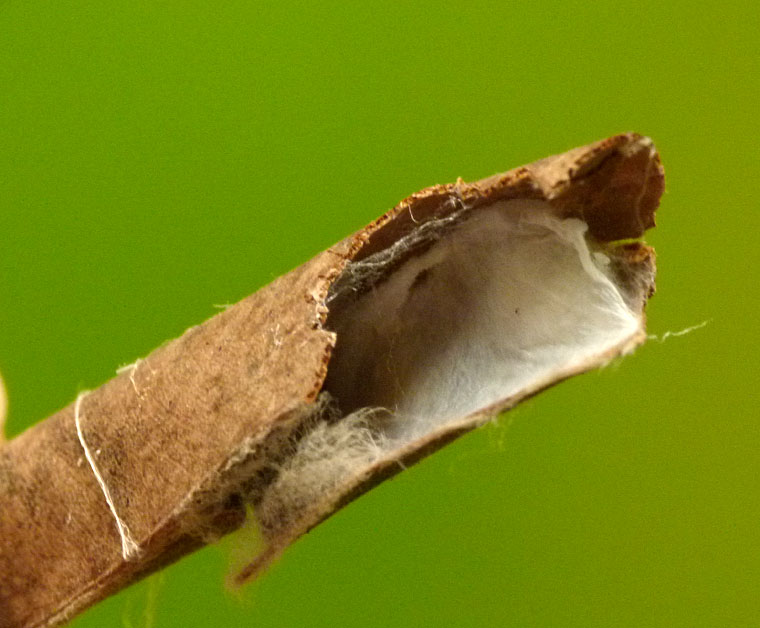
Egg chamber opened
